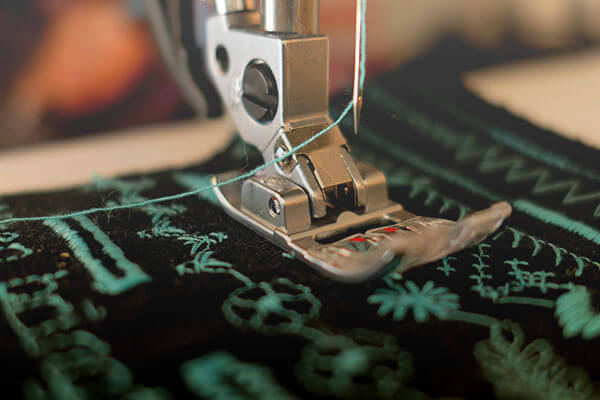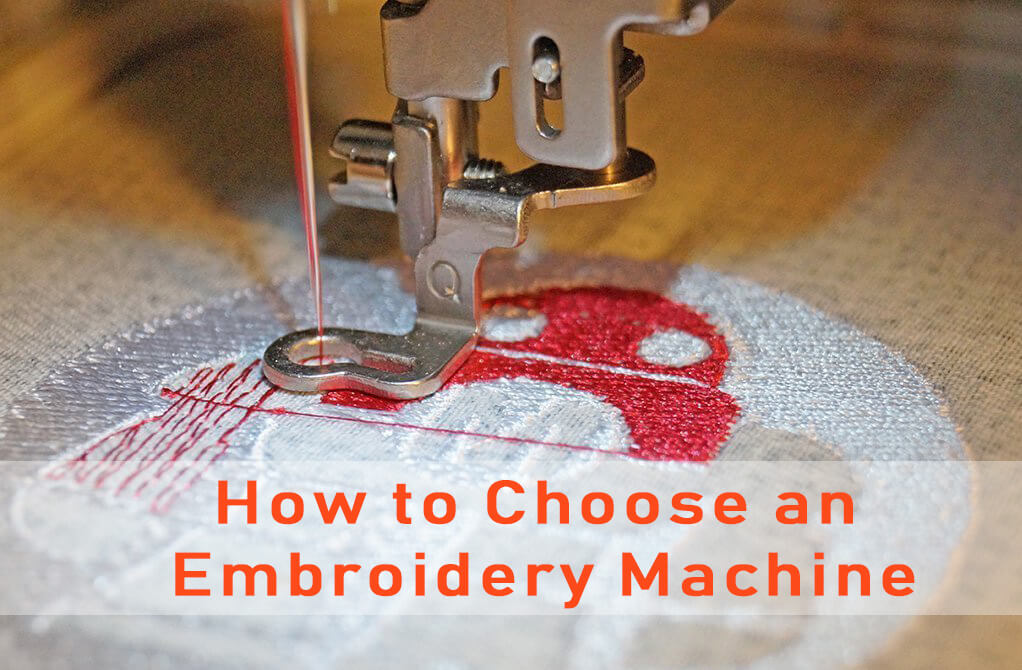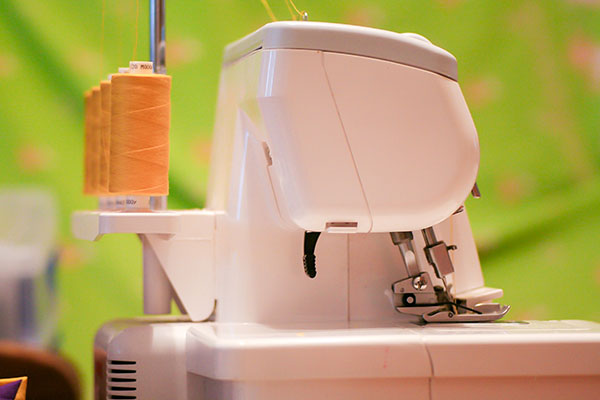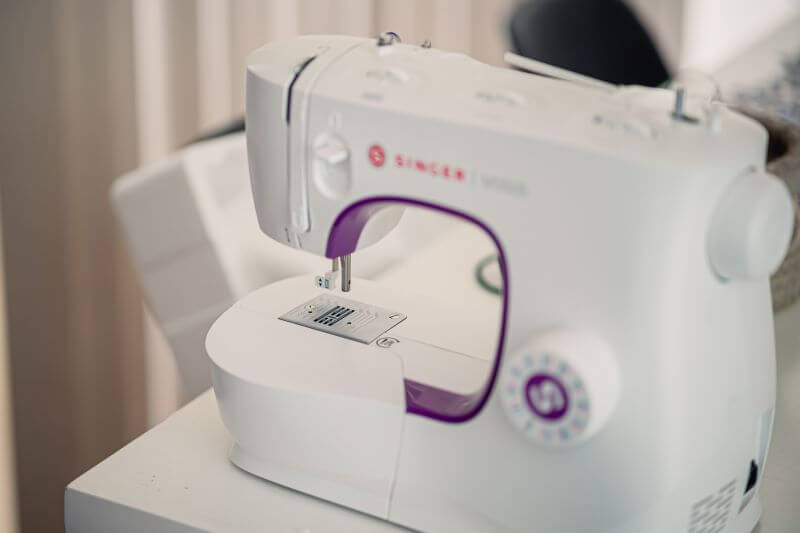 When you want to do embroidery work on a regular sewing machine, it may seem difficult at first. But the work itself is really simple and straight. Here, we’ll explain in details how to embroider with a sewing machine. Although, using a special embroidery machine can do the work easily, but a sewing machine is also capable of doing the trick.
When you want to do embroidery work on a regular sewing machine, it may seem difficult at first. But the work itself is really simple and straight. Here, we’ll explain in details how to embroider with a sewing machine. Although, using a special embroidery machine can do the work easily, but a sewing machine is also capable of doing the trick.
You will need some skill, time, and precise stitching. But, the task is really easy if you stick with the step-by-step guidelines. So, what are the process?
How to Embroider with a Sewing Machine on Your Own
Mainly there are two main processes involved, preparing the fabric and using the sewing machine. We’ll break these two process into some parts to explain it to you. Start then?
Prepare the Fabric
The preparation of the fabric is very necessary. There are some steps involved when you want to ready the fabric for embroidery works. Those are:
Iron the Fabric
 You may want to iron the fabric as it helps to make a good and tight design. The fabric must not have any wrinkle or crease. Iron the fabric if there is any wrinkle. The fabric may have dust or stain on it. In that case, wash it and dry the fabric properly.
You may want to iron the fabric as it helps to make a good and tight design. The fabric must not have any wrinkle or crease. Iron the fabric if there is any wrinkle. The fabric may have dust or stain on it. In that case, wash it and dry the fabric properly.
Paper Template Placement
You should draw or print your design on paper. Then cut the design and place it on the material to see how it fits on it. After finalizing the placement, pin the paper to it.
Mark the Placement
Now you should mark around your design by a washable fabric pencil. The up, down, right, and left side of the design should be marked. The center of the design in the embroidery hoop should be marked. To do that, you may fold the design in half widthwise and lengthwise. Then the point of intersection is the center. Now, you can remove the paper template.
Choosing a Stabilizer
Other than a heavy material, you may need to use a stabilizer to the back part of the fabric. The choice of the stabilizer depends both on the weight of the fabric and the intended design of the embroidery.
A cut-away stabilizer is okay for most of the fabrics. This helps for the embroidery of a fabric viewable from the front. It’s a permanent stabilizer. For both side view embroidery, you may want to use a tear-away or wash-away or heat-sensitive one. These are removable stabilizers.
For linen and cotton, you can use almost all of the stabilizers. But, for interlock and knit type one, you should use cut-away stabilizers.
Adhere to the Stabilizer
For the cut-away stabilizer, you should use a thin and even coat of spray type adhesive that is temporary. It should be done one side of it and then put the stabilizer onto the opposite part of the fabric. Some of the stabilizers are self-adhesive too. One thing to remember, the stabilizer piece should be larger than your embroidery hoop.
Topping Required or Not
Although most of the fabrics don’t need a topping but need to use one for a fluffy type fabric. That way it obstructs the sinking down of the embroidery into the fabric. Toppings are wash-away materials, so don’t hesitate to put them on the right side of the fabric.
Now, you should close the fabric and stabilizer together. The layers would be like topping first, then the fabric, and then the stabilizer.
Using the sewing Machine
Now the embroidery part begins. If you follow the previous steps well, then the next steps would be really simple and easy.
Attaching Embroidery Foot and Needle
Firstly, you should attach an embroidery foot to your machine. Also, you will need to move the standard needle and place a sharper one instead. Be very careful when you are changing the needle and the presser foot. An ideal embroidery needle would be a wise choice.
Lowering the Feed Dogs
As the material should be free to move around, you must lower the feed dogs under the needle. They can’t rise out of the sewing machine. Also, you can place some metal plate over the feed dogs. This way they wouldn’t interfere with the fabric. You can use the instruction booklet for any kind of advice on how to do that.
Set the Machine
Now you should turn on the machine. Thread your machine like before. Of course, you need to use the embroidery thread instead of the regular one. Both the top needle and the bobbin must be threaded. For the needle, use embroidery thread. But, for the bobbin, use the all-purpose one.
Stitch Length and Width
Both the stitch length and width should be set to zero. For selecting the stitch style, choose the standard straight one.
Presser Foot Lowering
Now you should place the hooped fabric nicely under the needle. After that, lower the presser foot so that it touches the material. You can use the lever of the machine’s presser foot. One thing to remember that the right side of the material should be up.
Stitch
Now you should stitch around the outline. Start from one place and then move the hoop gradually with your hands. Don’t move the fabric too quick as that will make the stitches lose and wide. Small and tight stitches are perfect.
Fill the Outline
You should slowly fill the outline. Then start filling in. Like before, don’t rush when you are doing it. This is a process where you will need time. The area of the embroidery is important as that will determine how much time you need.
Remove any Excess Stabilizer
Now, remove the fabric from your sewing machine and the hoop. Trimming of the stabilizer is needed if you have used a cut-off type stabilizer. Likewise, the tear-away type needs to be ripped off, the wash-away ones to be washed, and the heat-sensitive types to be ironed. Now, the project is done.
Let’s Watch a Video
End Words
Many of the sewing lover wonder on how to embroider with a regular sewing machine. Now, they will have a simple and easy process to follow. After reading these guidelines, you will also be able to do it on your own. Don’t be scared of making any mistake. In the beginning, you may face some difficulty. But, over time you will find your form. So, enjoy the process of making your desired embroidery with your sewing machine!









[…] How to Embroider with a Sewing Machine […]